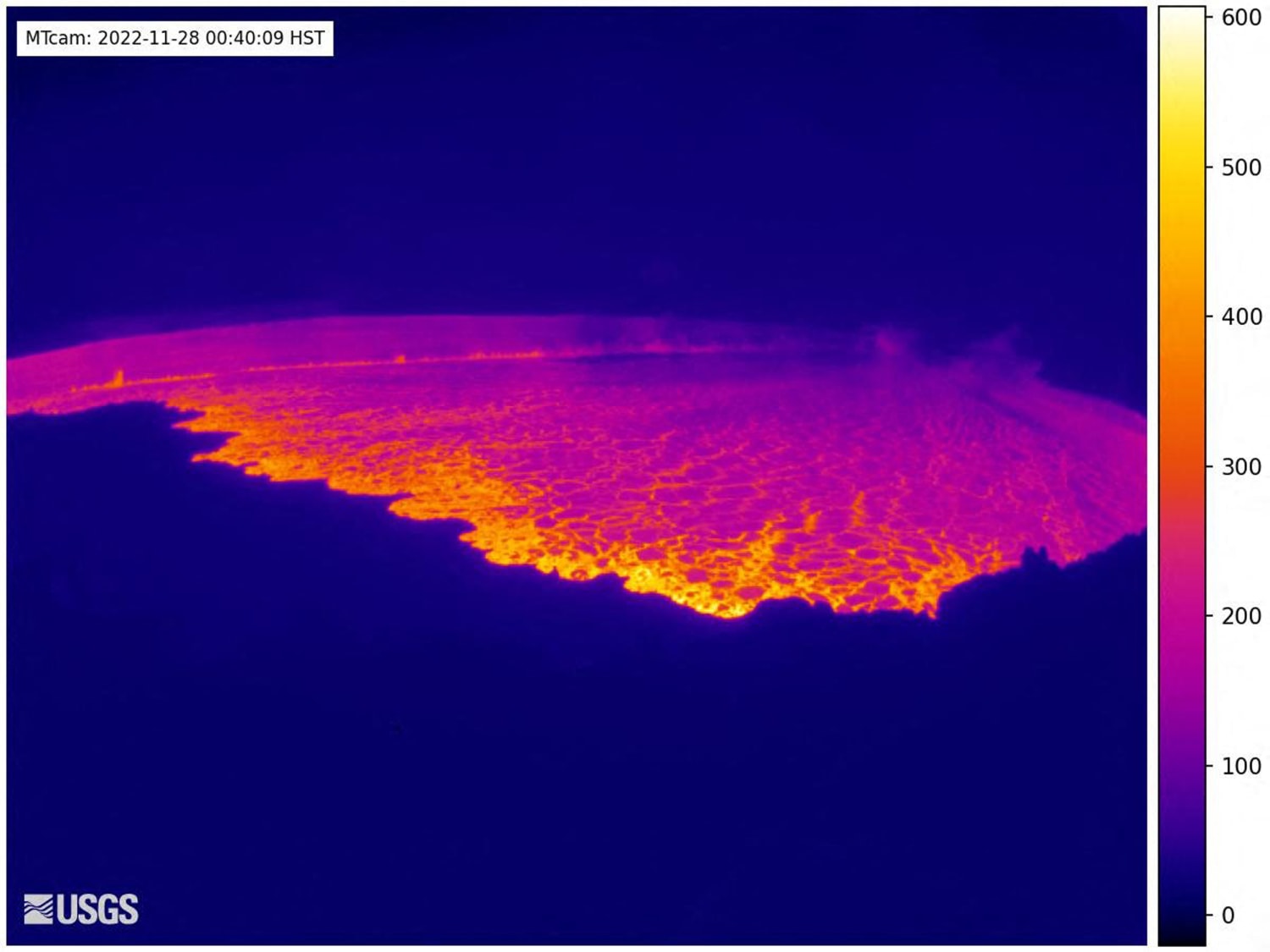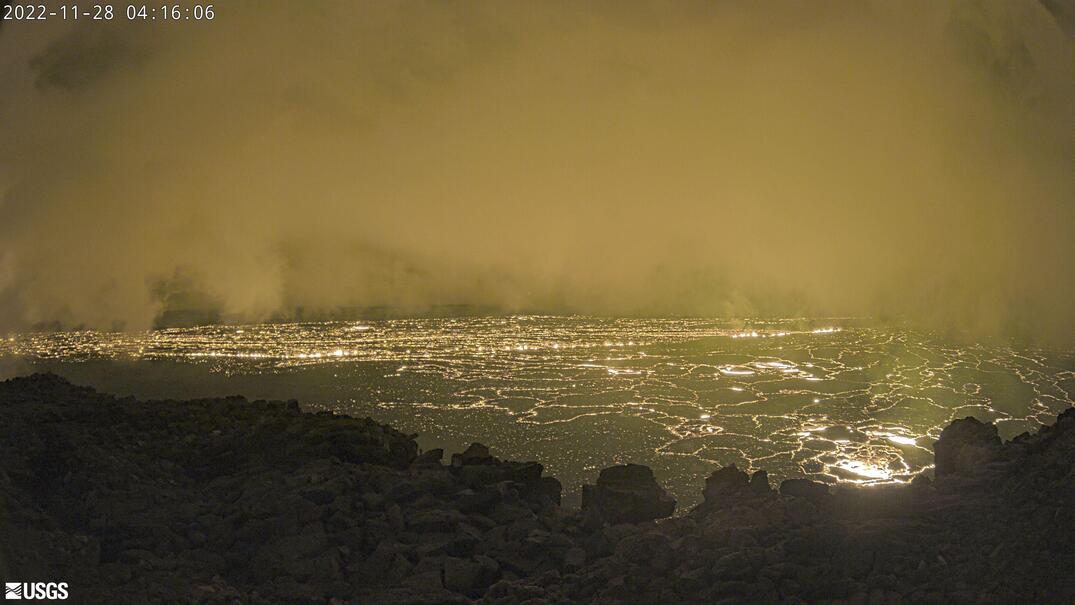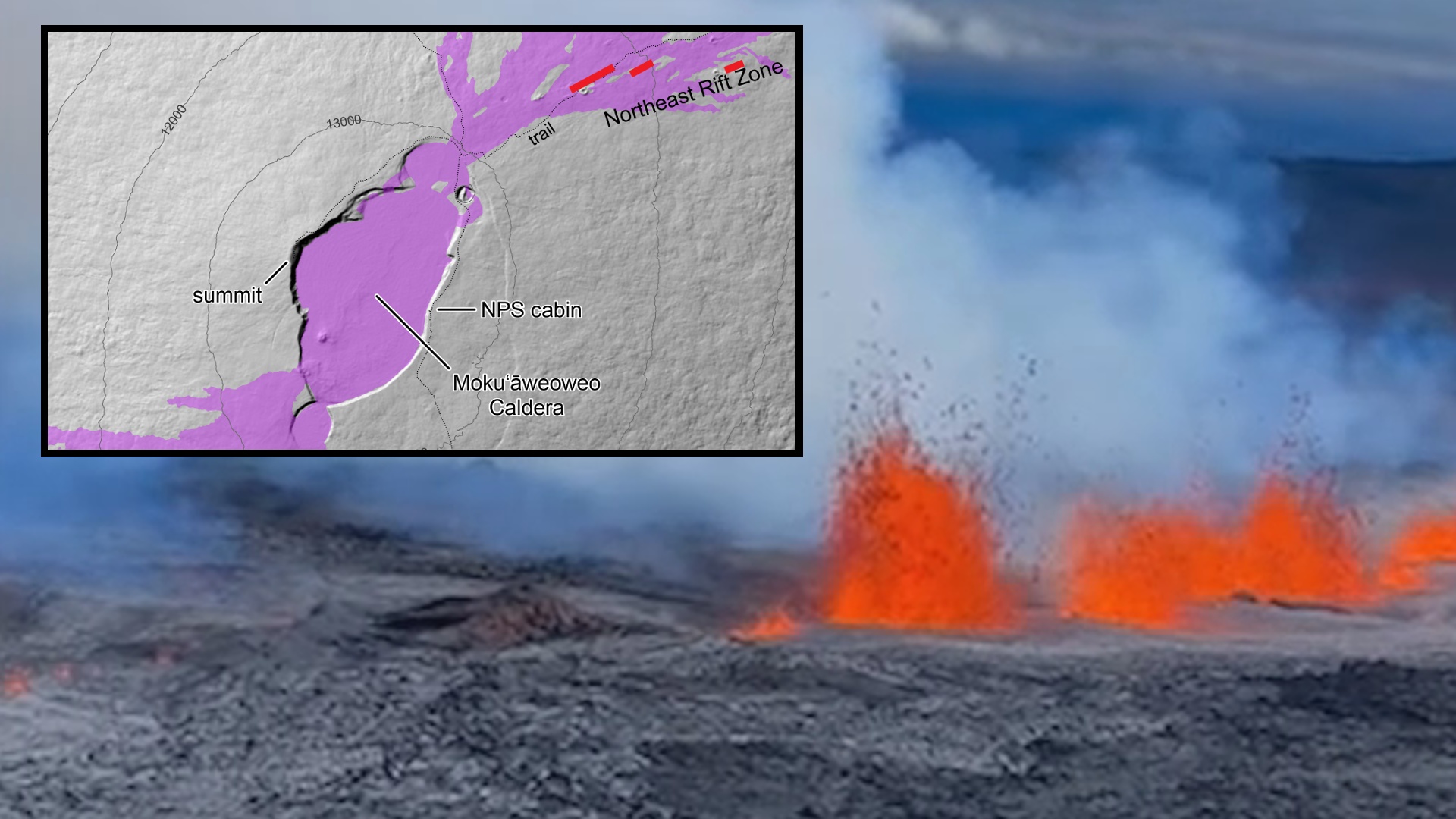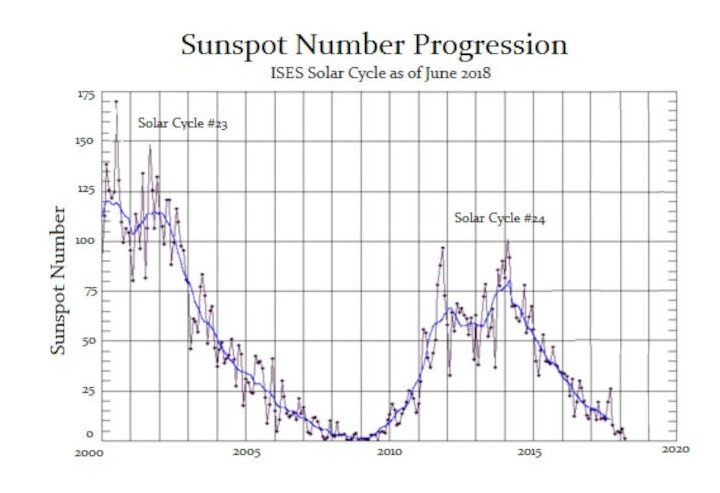Mauna Loa, Hawai'i
28 Nov 2022
Wow, that does make my heart beat rise a couple notches, because my second husband and I visited the Hawai'i Big island back in 2010 for 2 weeks [a place I never even dreamed of to visit] - went to places all across the island, including going on top of the twin volcano; Mauna Kea. It is such a fascinating landscape(s) all around the island - from tropical and lush to desert like moon landscapes, hard to describe in words, and mind boggling to say the least.
And the funny thing is, as i just woke up in the evening - an sms from my second husband popped up after years (We usually don't communicate). He appears connecting me to... uhm... (surprise).... volcanoes.

That's actually really sweet
I went to german "Vulkane.net" and let's see what Marc Szeglat wrote; with two articles as following:
Am weltgrößten Vulkan, dem Mauna Loa auf Hawaii, begann heute Vormittag eine Eruption. Lava fließt in der Gipfelcaldera.
www.vulkane.net
An eruption started at Mauna Loa
28 November 2022 • by Marc Szeglat
State: USA | Location: 19.47, -155.59 | Activity: Lava flow
The earthquake activity this morning (vnet reported) at Mauna Loa was an indicator of the beginning of an eruption. On the LiveCam you can see that an eruption fissure has opened in the caldera and lava is flowing out. It is currently flooding the caldera floor.
The HVO reports that the eruption started around 23:30 HST (10.30 UCT). The activity is so far confined to the Moku'āweoweo summit caldera and poses no danger to residents. Nevertheless, the alert status has been raised to "red". Volcanologists stress that the wind may blow volcanic gases and possibly fine ash and Pele's hair. Health authorities are in close contact with the HVO and close monitoring is being done to see if any health hazard develops for humans and animals. As early as October, residents were warned to prepare for evacuations if a volcanic eruption occurred at Mauna Loa. If cracks form on the volcano's flanks, then residents living near the volcano are in danger. Lava at Mauna Loa is usually thin and flows quickly.
The eruption started quite surprisingly now, as there was no major seismic crisis beforehand. Although seismicity and inflation had been elevated since September, both parameters had declined slightly in the last few days. Only when the fissure opened did a small swarm of earthquakes begin. A noticeable number of earthquakes had magnitudes greater than 2. The quakes were close to the surface. When I inspected the LiveCam this morning as part of my earthquake news, nothing had yet been seen.
Photos are being shared on social media showing a red illuminated night sky over the volcano. In these shots, it looks like an eruption fissure has also opened on the volcano's flank!
Update 17:00: Apparently fissures have now opened on the volcano's flank. Some sources speak of 3 fissures. One seems to be quite long. Lava could now reach inhabited areas and also flow into the ocean.
END OF ARTICLE
Auf dem Nordostrift öffneten sich mehrere Spalten. Lavaströme fließen in Richtung Mauna Loa Weather Observatory.
www.vulkane.net
Mauna Loa on Hawaii: Eruption fissures on the flank
28 November 2022 • by Marc Szeglat
State: USA | Location: 19.47, -155.59 | Activity: Lava flow
Fissures on the northeast flank of Mauna Loa volcano
What the sparrows have been whistling for the last few hours has now been confirmed by HVO officials: Several fissures opened on the northeast drift. Lava flows are heading towards Mauna Loa Weather Observatory. There is no further official data so far. However, on the live graphs of the geophysical parameters one can see that the inclinometers jumped shortly before the eruption started and detected a very fast inflation of up to 100µrad. So a larger magma body must have risen. However, these are raw data that still have to be evaluated by volcanologists. The EMSC detected a good 70 quakes with magnitudes of 2 and above. Seismicity remains high and further fissure openings must be expected.
END OF ARTICLE
About Mauna Loa
by Marc Szeglat
Mauna Loa ist ein großer Schildvulkan auf Big Island Hawaii. Misst man seine Höhe vom Meeresboden aus, dann ist Mauna Loa der größte Berg der Erde.
www.vulkane.net
Mauna Loa is not only the most powerful volcano in Hawaii, but also
the largest active fire mountain on earth: if you measure it from the seabed,
it is almost 9200 m high. This makes it tower over even Mount Everest. The overseas part of the volcano is an impressive 4170 m high. Its diameter is 120 km. Its mass is so enormous that the volcano is even denting the Pacific plate. It is only surpassed by the neighbouring volcano Mauna Kea by a few metres. However, Mauna Kea's volume and mass are smaller than Mauna Loa's.
Mauna Loa is a typical shield volcano that produces relatively thin tholeiitic basalt lava. Two nested calderas spread out at its summit. The outer one measures 6x8 km, the inner one 3x5 km. The latter was formed only about 600 years ago after a major eruption. Two rift systems emanate from the summit crater Mokuaweoweo, along which magma rises.
For an active volcano, Mauna Loa is comparatively old: it began growing from the seabed a good 1,000,000 years ago. In this first stage as a seamount, it produced pillow lava and hyaloclastite. This is the typical pyroclastics of submarine volcanoes. Hyaloclastite contains a lot of volcanic glass and is formed in the absence of oxygen. Mauna Loa reached the water surface 400,000 years ago and thus entered its 2nd life cycle as a shield volcano of a hot spot.
Since the islands of Hawaii were settled relatively late, only a few records of volcanic eruptions exist. One of the first descriptions dates from
1832, and 33 eruptions are known since then. In the 19th century, an eruption occurred that lasted a year and produced 4.1 cubic kilometres of lava. The largest known eruption of Mauna Loa began in 1950, opening a 20 km fissure along one of the rift systems. Lava fountains fed lava flows that reached the sea within 4 hours. The fastest lava flow reached a speed of 48 km per hour. Another series of eruptions occurred in 1975. The last eruption so far took place in 1984.
Years earlier, inflation had already begun and the volcano began to swell. In spring, swarm quakes were recorded: the strongest single quake had a magnitude of 6.6. On 24 March, tremors set in and one day later the eruption began. A fissure opened in the southwest of the summit caldera and a lava fountain generated lava flows that flooded the bottom of the caldera. A few hours later, the northeastern rift zone opened 650 m below the summit. Lava flows headed towards the island's capital, but stopped at the outskirts. The eruption ended after a little more than 3 weeks.
Since then, it has been relatively quiet at Mauna Loa. However, volcanologists have observed slight inflation in recent years. Since spring 2015, seismicity has been increasing somewhat. A new eruption cycle of the volcano could start soon.
END OF ARTICLE



 That's actually really sweet
That's actually really sweet



